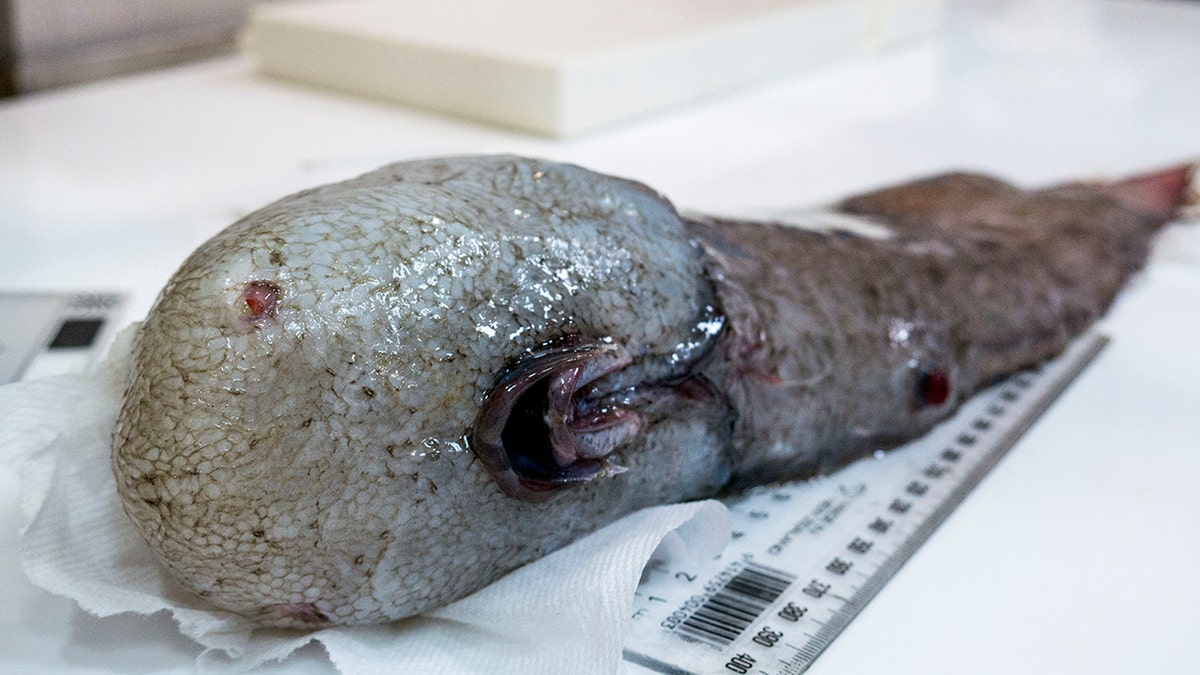
Among the mysterious creatures found were the faceless fish, a deep sea fish with no visible eyes and a mouth on the underside of its head. (©Asher Flatt and Marine National Facility)
It's one of the most inaccessible and unexplored places on the planet. Now Australian researchers have managed to haul in creatures from the deepest, darkest depths of the ocean, rarely seen by humans.
And the collection includes previously undiscovered sea life, as well as the cousin of the “world’s ugliest animal.”
The huge haul of miscellaneous miscreants is part of a voyage tasked with broadening our understanding of some of the most unknown animals in the world.
Last year, an international team of 40 scientists set out on a world-first survey to explore marine biodiversity in the abyssal waters off the east coast of Australia.
The mission, Sampling The Abyss, used a beam trawl and other equipment to collect species from depths reaching nearly 5 km (approximately 3 miles), in a bid to increase our understanding of the ocean depths.
The result has prompted scientists to gather in Tasmania this week to examine them more closely.
Among the mysterious creatures found were the faceless fish (a deep sea fish with no visible eyes and a mouth on the underside of its head), at least three new Australian records of gelatinous cusk eels, bioluminescent cookiecutter sharks, a haul of frightening lizard fish and a tripod fish which sits on the sea floor on its long fins waiting for food to drift within reach.
And, of course, blob fishes, which are relatives of Mr. Blobby who was voted the World’s Ugliest Fish in 2013.
Mr. Blobby, from the psychrolutidae family, was discovered off the coast of New Zealand in 2003 and affectionately named by the scientists who found it.
Abyssal plains cover half the world’s oceans and one-third of Australia’s territory, but are some of the least explored areas on Earth.
The voyage, an international collaboration led by Museums Victoria, was the first-ever survey of Australia’s eastern abyss.
Processing the catch on board involves separating different species, photographing specimens to record their colors, extracting muscle samples for DNA analysis, preserving specimens in formalin then ethanol, and freezing some of the catch for later processing.
Museums Victoria ichthyologist Martin Gomon said: “The discoveries provide us with a glimpse into how our marine fauna fits into the interconnected abyssal environment worldwide and for the scientists, adds another piece to the puzzle of what affects evolution in the deep sea.
“For those of us aboard it was a real buzz to see the amazing fishes that provide this information as they emerged from the nets and we’re looking forward to the opportunity to take a closer look at them in Hobart this week.”
Life at such depths is one of crushing pressures, no light, little food and freezing temperatures, with animals that call it home evolving unique ways to survive.
As food is scarce, they are usually small and move slowly. Many are jelly-like and spend their lives floating about, while others have ferocious spines and fangs and lie in wait until food comes to them.
CSIRO ichthyologist John Pogonoski described the trip as “frontier science” which was vital for increasing scientists’ understanding of the deep-sea environment.
“We are investigating possible new species and fishes never before recorded in Australian waters,” he said.
While Australian scientists have spearheaded the project, the research is an international effort and some specimens have already being sent to scientists in Denmark who specialize in abyssal fishes.
— With AFP
This story originally appeared in news.com.au.
